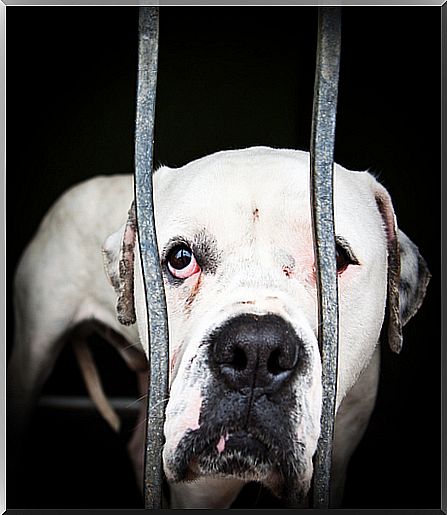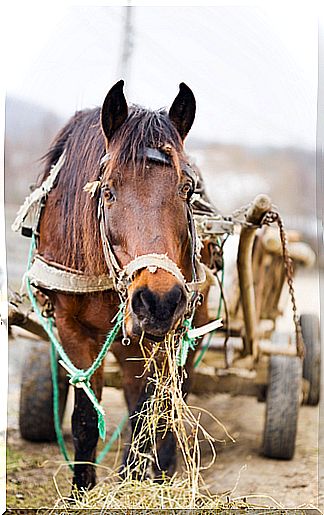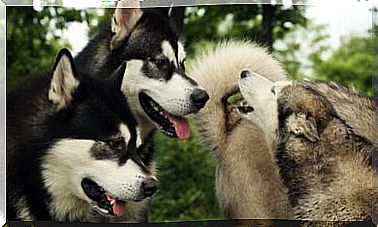What To Do About Animal Abuse?

Animal abuse is a sensitive issue, especially as it involves the health and well-being of a living being, but in many countries, animal abuse policies and legislation are still weak, although most have codes that ensure integrity. of domestic animals, as well as the prohibition of the possession of certain exotic species.
This article will give you some tips on what to do about animal abuse.
First, let’s take an inventory of what exactly animal abuse means.
When it comes to animal abuse, we are talking about attitudes or actions, excess or omission, that put at risk the integrity, physical and psychological health of an animal, or that threaten its life and normal development.
Excessive acts or attitudes

These are all kinds of actions, or attitudes, that are committed against an animal and are considered excessive.
For example, violent punishment, shock or aggression, isolation, limitation of conduct, among others, which end up affecting the animal both in its physical and psychological integrity, preventing the normal development of the animal and causing behavioral problems that require treatments and therapies.
Remember that overprotection and overfeeding are also forms of abuse, which can trigger similar behaviors in animals (nervousness, stress, aggression, illness) to acts performed in a violent manner.
acts or attitudes omission
They are all kinds of actions or attitudes related to the omission of care for an animal’s needs. These include lack of food, shelter, medical care, exercise, among others.
They correspond to systematic behavior and are considered, as in acts of excess, types of torture.
The Basic Needs of an Animal
The process of legally determining whether an animal is abused or not is based on violating its basic needs. In general, they are:
Respect for physical integrity
Regular veterinary care and attention
food
Exercise and Health
Shelter
the carts

Possibly, one of the most legislated cases is that of carts (animal-drawn vehicles) and the raising of animals for human consumption.
Unfortunately, this is not done for the benefit of the animal, but to avoid situations that could affect traffic mobility or human health.
In many countries the use of animal-drawn vehicles is prohibited, but some countries still allow it, limiting only the amount of weight an animal can carry.
In these animals, frequent strokes, malnutrition or evident lacerations in the animal’s body can be observed, and almost always malnutrition (which can be seen in the ribs of animals such as horses, donkeys and oxen).
If you notice a case of abuse in an animal that pulls carts, you can contact the transit office and explain the situation, if you can, make video or take pictures, they will serve as evidence so that justice can remove the the owner’s animal.
Domestic animals
Domestic animals include those that are bred for human consumption and also for companionship.
If you observe violations of the rights of animals for human consumption, it will be much easier for justice to intervene than in the case of pets.
This is because the owners must guarantee certain conditions of hygiene, vaccination, nutrition, so that the resulting product is of excellent quality and does not put people’s health at risk.
So, a simple call may be enough to solve the problem (I’m being optimistic).
Unfortunately, in the case of pets, in some countries, there is an almost complete lack of regulation of what is characterized as abuse.
So you must know what the law is and how to use it.
For example, in most countries, there are codes that govern the proper ownership of pets, which is responsible for basically outlining aspects of coexistence.
One more example, there are laws that say to check your pet’s excrement to prevent the spread of disease or odor, so if you see an animal that lives in unsanitary conditions, you can call the police.
A phenomenon that has been extremely beneficial to animals is the complaints made through social networks, which put pressure on authorities, forcing them to act.
You can intervene in person, although it is not recommended, because although many animal abusers avoid confrontation with others, you could be assaulted.
However, if the abuser is receptive, try to approach him positively, many cases of pet abuse are not due to malice, but rather due to ignorance.
You may also be able to file a complaint with an animal protection organization. They are responsible for receiving most complaints.
So, basically, the recommendations are, find out about animal rights, report it, gather evidence (videos, photos, testimonies) inform the authorities and seek support from animal protection bodies present in your region.









